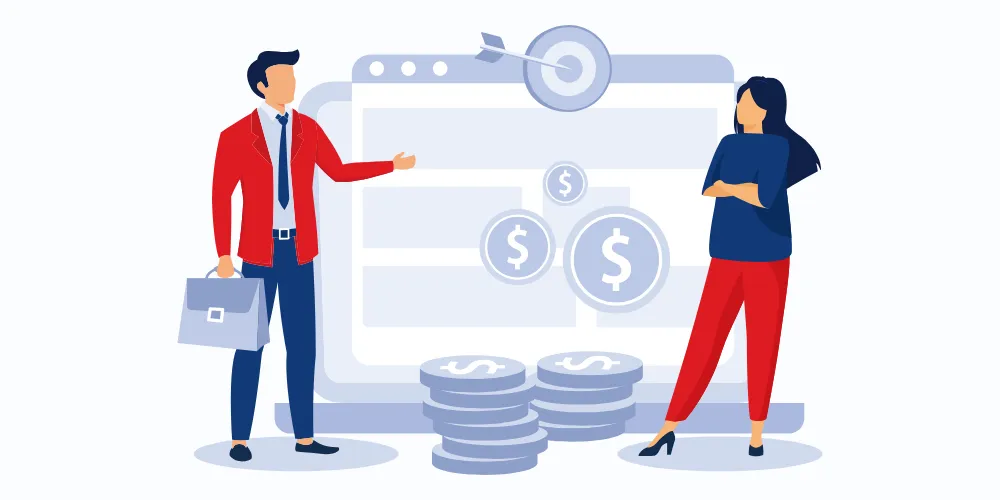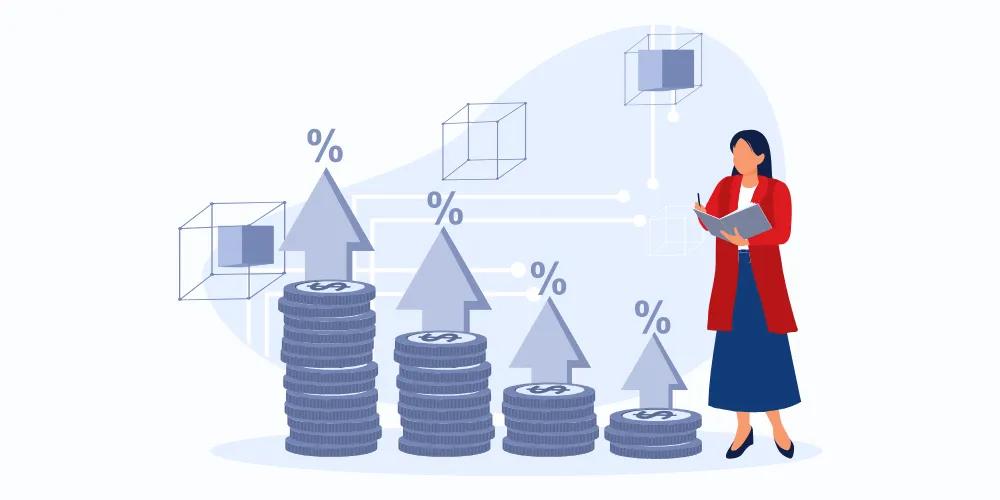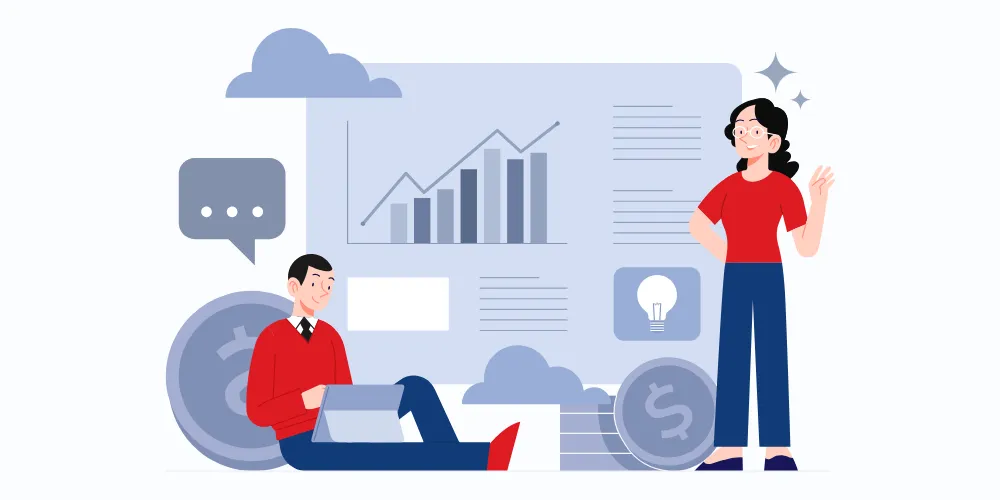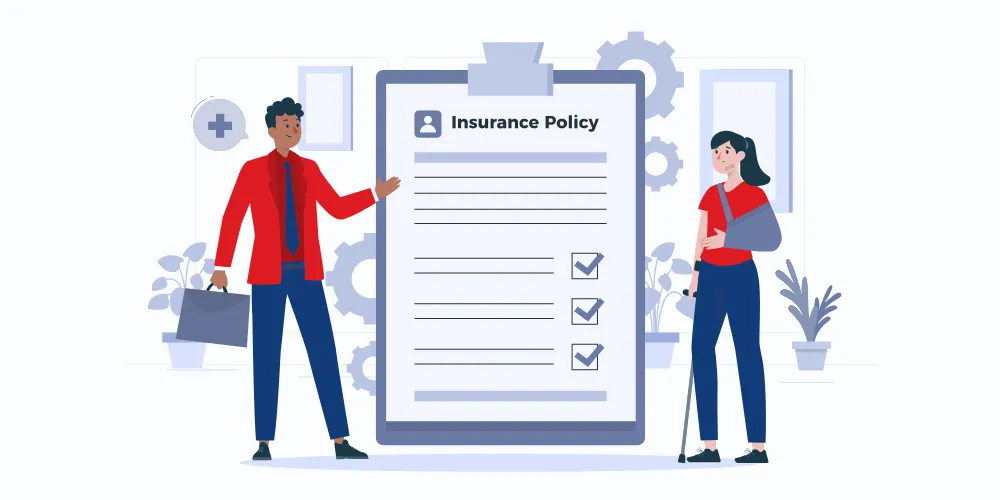Cash And Non-Cash Incentives Compared
- Sumeet Shah
- May 18, 2022
- 4 min read
- Last updated on Jan 28, 2025
Introduction
Cash reigns supreme. Is that the case? It's tempting to believe that money makes the world go round, but this isn't the universal case regarding incentives. A cash incentive program is an amazing way to motivate and reward staff, but it's far from the only successful choice. While offering increased pay or cash incentives for employees may be alluring to boost sales performance, you should also consider non-cash incentives. In short, there are two distinct pathways: cash and non-cash incentives or rewards:
- Employees receive cash incentives through a cash bonus or a commission structure.
- Non-cash bonuses are benefits linked to achieving a goal or selling a product.
What are Cash Incentives?
Cash incentives are monetary rewards given to employees for achieving specific goals, such as meeting sales quotas or completing projects. These rewards have a clear monetary value, providing employees with a direct financial benefit. Examples include individual or team bonuses, annual bonuses, contests with cash prizes, profit-sharing, and salary increases. Cash incentives effectively motivate employees to achieve company objectives and can be a strong driver for performance, especially in sales-driven roles.
Benefits of Cash Incentives
Cash incentives offer several clear benefits that make them a popular choice for rewarding employees.
Universal Appeal:
Cash holds universal value and appeals to everyone, regardless of their lifestyle or preferences. It offers employees the flexibility to use their rewards in ways that matter most to them—whether that’s covering daily expenses, investing in savings, or splurging on something they’ve been eyeing. This adaptability ensures the reward feels personal and meaningful to every individual, making cash a highly inclusive option.
Immediate Gratification:
One of the most compelling aspects of cash incentives is their ability to provide instant rewards. The immediacy of receiving a cash bonus strengthens the connection between effort and recognition. It taps into human psychology by delivering gratification when it’s most impactful, encouraging employees to maintain or improve their performance. The immediate reinforcement can drive quick behavioral shifts and sustained motivation.
Straightforward Administration:
From an administrative perspective, cash incentives are easy to manage compared to other reward types. Whether distributing bonuses, tracking payouts, or managing tax compliance, the process is straightforward and efficient. This simplicity reduces the operational burden on HR and finance teams, allowing organizations to focus more on refining their incentive strategies rather than dealing with logistical complexities.
Clear Performance:
Cash incentives shine in their ability to clearly link rewards to specific performance outcomes. Employees can easily see how their achievements translate into tangible benefits, creating a sense of fairness and transparency. This clarity enhances accountability, encourages goal alignment, and motivates employees to exceed expectations, as they can directly associate their efforts with meaningful rewards.
Boosts Morale:
Few things communicate appreciation as effectively as monetary rewards. Cash incentives make employees feel seen, valued, and appreciated for their contributions. This recognition fosters a sense of belonging and improves overall morale. A workforce that feels appreciated is more engaged, more loyal, and more likely to go the extra mile for their organization.
These advantages make cash incentives an effective and widely used tool in driving performance and rewarding success.
Challenges of Cash Incentives
Relying solely on monetary rewards can create unintended consequences that impact both employee motivation and organizational budgets. Here are some key challenges to consider:
Short-Lived Motivation:
While cash rewards provide an initial boost in motivation, this effect is often short-lived. Employees tend to adapt quickly to monetary incentives, and over time, they may begin to see them as expected rather than earned. This phenomenon, often referred to as the "hedonic treadmill," can result in diminishing returns where the organization needs to continuously increase the reward amount to achieve the same motivational impact.
Perceived as Entitlement:
When cash incentives are provided frequently, or without clear ties to performance, employees may start to view them as an entitlement rather than a reward. This perception diminishes the value of the incentive and reduces its effectiveness in driving desired behaviors. Over time, what was intended as a motivational tool becomes seen as an extension of their salary, blurring the distinction between base pay and rewards.
Lacks Emotional Connection:
Cash incentives, while practical, often fail to create a memorable or emotional connection with employees. Unlike experiential rewards, such as recognition programs or personalized gifts, cash doesn’t evoke a sense of uniqueness or long-term appreciation. This lack of emotional resonance can result in a transactional relationship between the organization and its employees, missing an opportunity to foster deeper engagement.
Potential for Inequality:
If not carefully designed and communicated, cash incentive programs can lead to perceptions of favoritism or unfairness among employees. For example, inconsistencies in reward criteria or unclear performance metrics can create dissatisfaction among team members, eroding trust and morale. Ensuring transparency and equity in how rewards are distributed is crucial to maintaining a positive workplace culture.
Budget Strain:
Cash incentives, particularly when used as the primary reward mechanism, can place significant strain on organizational budgets. Over time, as employees expect larger rewards to remain motivated, costs can escalate, making the program unsustainable. This issue is particularly challenging for smaller organizations or those operating under tight budget constraints.
These challenges highlight the importance of balancing cash rewards with other incentive strategies to maximize effectiveness.
What are Non-Cash Incentives?
Non-cash incentives are non-monetary rewards given to employees to recognize achievements and enhance their value to the organization. These perks go beyond salaries and bonuses, focusing on celebrating milestones like meeting sales targets, completing projects, or earning certifications. Examples include travel vouchers, event tickets, high-tech gadgets, dining experiences, or leisure activities like spa days or golf. Such rewards demonstrate appreciation and can effectively boost motivation and performance by offering meaningful and personalized recognition.
Benefits of Non-Cash Incentives
Non-cash incentives are a creative way to recognize and reward employees, offering advantages beyond monetary compensation. Here’s why they’re impactful:
Long-Lasting Impact:
Unlike cash incentives, which are often spent and forgotten, non-cash rewards leave a lasting impression. Experiences like a team outing, personalized gifts, or public recognition create meaningful memories and foster emotional connections, making employees feel genuinely valued.
Encourages Performance:
Non-cash incentives, such as awards, certifications, or exclusive perks, can be tailored to align with organizational goals. By recognizing achievements in a visible and unique way, these incentives reinforce positive behaviors, encouraging employees to perform at their best and inspiring peers to strive for similar recognition.
Strengthens Employee Engagement:
Creative rewards like access to exclusive events, professional development opportunities, or additional time off demonstrate thoughtfulness. These gestures show employees that the organization cares about their well-being and interests, boosting morale and fostering a sense of belonging within the team.
Cost-Effective Options:
Non-cash incentives can often deliver substantial value without requiring large financial outlays. Thoughtfully chosen rewards—such as recognition programs, wellness benefits, or team-building activities—can generate significant impact, making them both effective and budget-friendly.
Improves Workplace Culture:
Through personalized & meaningful rewards, organizations can demonstrate their commitment to employees’ happiness and success. This approach contributes to a positive work environment, enhancing employee satisfaction and building a culture of appreciation and mutual respect.
Challenges of Non-Cash Incentives
Non-cash incentives, while effective, come with their own set of challenges:
Varied Preferences:
Employees have diverse interests, making it challenging to choose rewards that resonate with everyone. For example, a travel voucher may excite some employees but be impractical for others. This diversity requires a thoughtful approach to ensure rewards are inclusive and cater to individual preferences.
Administrative Complexity:
Non-cash incentives often involve additional logistics, such as sourcing, customizing, and distributing rewards. Unlike cash incentives, which are straightforward to administer, managing these details can be time-consuming and require more resources, especially for larger teams.
Measuring ROI:
Determining the effectiveness of non-cash incentives can be more subjective compared to cash rewards. It’s often harder to quantify their impact on performance, engagement, or employee satisfaction, making it challenging to justify the investment and measure success.
Risk of Dissatisfaction:
If the chosen reward doesn’t align with an employee’s personal interests or needs, it may backfire, causing disappointment or even resentment. For instance, a non-tech-savvy employee may not appreciate receiving the latest gadget, emphasizing the importance of personalization.
Budget Constraints:
Premium non-cash rewards, such as luxury trips, high-end gadgets, or exclusive memberships, can become expensive, especially for organizations with limited budgets. Without careful planning and prioritization, these costs can quickly escalate, making it harder to maintain a balanced incentive strategy.
These challenges underscore the need for thoughtful planning and alignment with employee preferences to maximize the effectiveness of non-cash incentives.
Cash Incentive Examples
Cash incentives are a versatile tool for motivating employees, rewarding performance, and driving organizational goals. They can be tailored to various scenarios, ensuring employees feel recognized and valued.
Performance Bonuses
One of the most common cash incentives, performance bonuses, reward employees for exceeding specific targets. Whether tied to individual, team, or company-wide goals, these bonuses boost motivation and align efforts with organizational objectives.
Sales Commissions
Sales teams often thrive on commissions, a direct reward for achieving or surpassing sales quotas. This structure drives productivity while providing immediate financial gratification.
Referral Bonuses
Encouraging employees to refer qualified candidates can help organizations find top talent. Referral bonuses act as an incentive for employees to recommend their networks while fostering a collaborative hiring approach.
Spot Bonuses
Spot bonuses are unexpected rewards given to employees for outstanding contributions or behaviors. These spontaneous gestures create a sense of immediate appreciation and encourage consistent performance.
Retention Bonuses
Retention bonuses are designed to keep employees during critical periods or organizational transitions. By offering a financial incentive to stay, employers can retain valuable talent and ensure continuity.
Cash incentives are simple, tangible, and highly effective. When deployed strategically, they can address diverse organizational needs—from boosting morale to achieving short-term business goals—while allowing employees the flexibility to use the rewards as they choose.
Non-Cash Incentive Examples
Here are the top four enticing non-cash incentives you can offer your sales reps:
Experiential Rewards
Experiential incentives leave lasting impressions and create emotional connections between employees and your brand. These rewards—like spa days, international trips, or local adventures—are seen as more meaningful than monetary compensation. They can be tailored to fit your team's interests and your budget, whether indulging hobbies or introducing new experiences. Research shows that such rewards enhance employee engagement and retention.
Shoutouts and Recognition
A heartfelt "thank you" can work wonders. Publicly acknowledging employees' efforts through shoutouts, written statements, or even social media posts fosters a culture of appreciation. Peer recognition programs and consistent gratitude from leadership help build trust, strengthen connections, and motivate teams. Recognition doesn’t just inspire; it reinforces that employees’ efforts are valued.
Extra Leave
Surprise your employees with an extra day off, a birthday holiday, or an extended lunch break. Time off shows appreciation while promoting a healthy work-life balance. Happier, well-rested employees are more engaged and productive. Ensure, however, that these gestures align with business goals and maintain a positive ROI.
Flexible Work Hours
Offering flexible schedules is a highly valued incentive, giving employees control over their time. Whether through remote work options, hybrid arrangements, or altered office hours, this reward demonstrates trust and supports work-life balance. If your team meets targets, flexibility is a win-win for everyone involved.
When to use cash vs. non-cash incentives
Choosing between cash and non-cash incentives requires understanding your team's motivations and the goals you aim to achieve. Each type of incentive serves a unique purpose and can be strategically employed to drive desired outcomes.
Cash Incentives
Cash incentives are best suited for short-term goals or when immediate performance improvement is required. They are highly flexible, allowing recipients to use the reward in ways that are most meaningful to them. For example, if you’re looking to hit aggressive sales targets, reward individual milestones, or boost productivity quickly, cash can be a straightforward and universally appreciated solution. However, cash can feel transactional and may not foster long-term emotional engagement or loyalty.
Non-Cash Incentives
Non-cash incentives excel when your focus is on building deeper connections and long-lasting motivation. These might include unique experiences, recognition programs, or personalized items that hold intrinsic value. Non-cash incentives are especially effective in reinforcing organizational values and creating memorable moments that employees associate with their achievements. They help to cultivate a sense of belonging and strengthen relationships, often leading to sustained engagement.
The most effective incentive strategy often blends both cash and non-cash rewards, leveraging the strengths of each to meet both immediate and long-term objectives. By aligning the type of incentive with your goals, you can inspire performance while fostering a culture of recognition.
Conclusion
Your company's specific circumstances and desired goals should guide your decision on whether to give cash or non-cash incentives to employees. You must recognize and reward people for their hard work and devotion, and being an effective manager requires knowing what sorts of incentive plans and awards your employees value. While money is useful, it cannot be used to establish an emotional relationship. As a result, non-cash incentives are a more powerful motivator. After all, people are the lifeblood of your business, and expressing gratitude is critical to its success.




